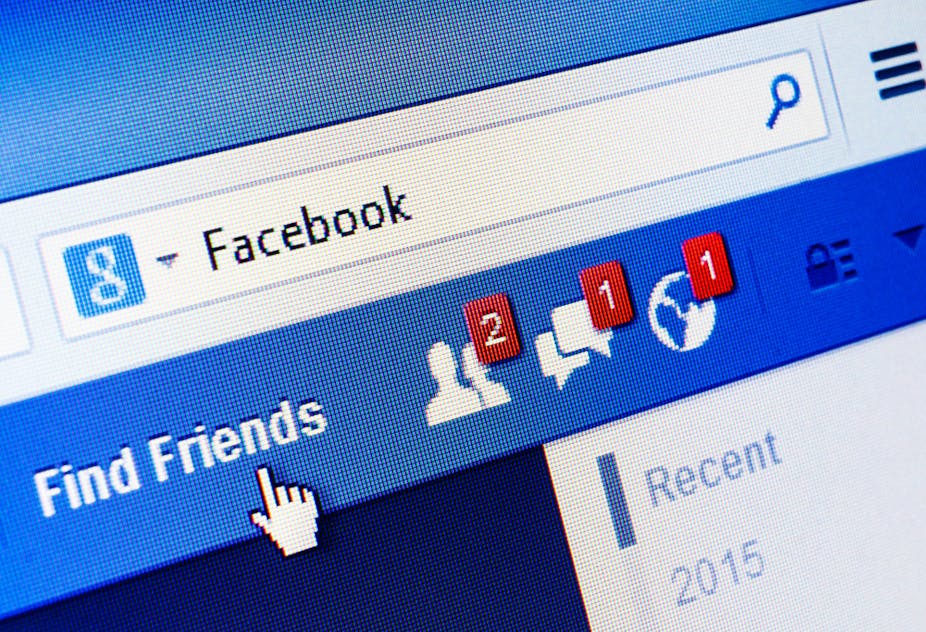The “catfish” phenomenon in which people take on different identities on social media and establish relationships with others who are unaware of their real identity is often cast as a black and white issue – a deception that is inevitably meant to cause harm.
But interacting with a known someone on social media using a disguised identity can be a way of changing the spoken and unspoken rules that guide our exchanges in real life. And it can be used both for good – expressing positive feelings – and for bad – taking advantage of someone.
While online catfish are a modern phenomenon, the act of hiding behind another identity has a long history. The recent case of a woman who was convicted after she impersonated a man on Facebook to dupe a friend into having sex is but one such story highlighted in the media.
Cyrano de catfish
Another famous example is Edmond Rostand’s play, Cyrano de Bergerac, in which Cyrano manages to express his feelings to his beloved Roxanne by hiding behind the identity of Christian. In this case, Cyrano uses the deception to express thoughts that are difficult to express in normal, day-to-day interactions. By hiding in this way, Cyrano is able to “reset” the relationship with his loved one and renegotiate the terms of this interaction. Unfortunately for Cyrano, Roxanne only realises this when it is too late.
Conquering the heart of a loved one is not the only reason why people create “fake” profiles on social media. Social networking sites offer an opportunity for people to try on different identities, and interact with others on the basis of that identity. This is particularly appealing to younger people who are still in search of their identity. It can be fun, and allows them to find out which hat best fits.
Another reason to create “fake” profiles can be to express parts of one’s identity which are not acceptable according to social norms. This can range from wanting to discuss a personal issue, something health-related for example, without being identified or when being homosexual is dangerous.
A better you
Social networking sites are used predominantly to affirm one’s identity rather than conceal it. One study, which analysed 63 college students’ Facebook profiles found that they were often used to make implicit statements about the person by posting pictures or “liking” pages, or listing interests that projected a positive, socially desirable version of themselves – ones that there were aspirations to reach but which “we haven’t yet been able to embody for one reason or another”.
There is a vast literature on how we construct online identities that explores the ways in which where users must identify themselves, they engage in a series of strategies such as the ones above to present themselves to their connections under the best light possible.

Cause for concern?
Despite the high-profile stories, people do not seem to be particularly dishonest online – one literature review concluded people that people actually tend to be more honest than dishonest on social networking sites.
Of course, there is certainly the need to offer users clear guidelines on online interactions, especially when it comes to relationships that are subsequently taken offline. This is particularly important when it comes to avoiding online predators. Many online dating sites offer users very sound safety tips which could be adapted to general online social networking.
In many cases catfish are happy to maintain the relationship online only: research shows how people looking for a face-to-face romantic interaction tend to be more honest. That said, even when there is no immediate danger for a person’s physical safety, the psychological harm of being deceived cannot be underestimated. Research has shown that parasocial relationships – ones in which relationships are established with a “mediated” other (whether a fictional character or a “real” person with whom the interaction occurs only via media) – can be just as intense as relationships lived in person.
One such study in 2004 suggested that viewers who expected to lose their favourite characters on television anticipated negative reactions similar to those experienced after the dissolution of a relationship in real life. Realising that one has fallen victim of online deception can therefore be as devastating as losing an “offline” romantic partner.
The power of ‘we’
When it comes to deception, online communities do also seem to be very aware of this phenomenon. An ethnographic study on identity construction on social media by psychologist Malene Charlotte Larsen found an overwhelming opposition to “fakers” on one close-knit Danish social networking site, who were often named and shamed by the other members of the community. Larsen showed how some users then posted about how they reached the conclusion that someone was a faker. By doing so, they were sharing important tools to avoid online deception.
It is certainly not the only close-knit online community, and Larsen also observed this on other social networking sites like Bebo and YouTube and Myspace. So if deception is a breach of the rules governing the interactions in the online community then the community itself can step in.
It is undeniable that in extreme cases catfishing can be dangerous and have negative consequences for both the person pretending to be someone else and the victims of their deception. But on social networking sites it’s not necessarily perpetrated with malevolence but something much broader: a form of entertainment, a prank, a way to explore one’s own identity or to connect with others in a different way. Safeguards can be built in and mutual support, knowledge sharing and monitoring can move to contain some of the dangers, but the evidence so far suggests that these are not as widespread as we might think.

